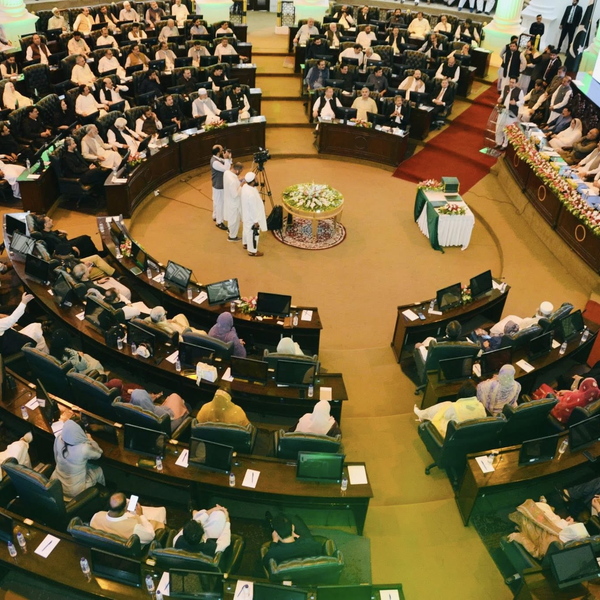The Damocles sword of tariffs
Tariffs will continue to be used as a negotiating tool, with intermittent taxes replacing blanket tariffs
Asad Ejaz Butt
Guest Contributor
Asad Ejaz Butt is an economist based in Boston, US. He tweets @asadaijaz.

The tariffs did exactly what they were supposed to do: invited anger from China, fear from Canada, and a timid subservience from Mexico—a mixed bag of responses that conveyed a sense of confusion among America’s trade partners.
Has the U.S. permanently backed off from tariffs, or will tariffs return? This has been a question on many minds since May 12, when the U.S. decided to lower tariffs on China to 30% from their peak of 145% in April.
Non-China tariffs had largely been paused, signaling perhaps the end of a short-lived regime of hyper-protectionism.
As I contend in this piece, import barriers will continue to feature in one form or another and vary in scale and intensity. This is not the 1970s, and tariffs are extremely hard to sustain for any nation, even if it is the consensus superpower of the world.
Going back to how it all started and in what direction things went, President Donald Trump, after facing immense backlash both locally and internationally, announced a 90-day pause in tariffs in April. This relaxation excluded China, whose exports to the U.S. were treated to 10% tariffs on February 1, which increased exponentially to 145% in April. On May 12, both countries made a conscious effort at détente: the U.S. lowered tariffs on China to 30%, while the Chinese brought their tariffs down to 25%. This move restored confidence and sanity in international markets.
At the peak of their trade war in April, when the U.S. slapped a blanket tariff of 145% on imports from China, each $1 worth of Chinese goods imported into the U.S. would have had a landed cost of $2.45. Mexico and Canada, the two other large exporters to the U.S., were subjected to a uniform tariff of 25% each, causing widespread anxiety and suppression in their respective markets. Some of the markets started making slow recoveries following the announcement of the pause in April.
The tariffs, deemed a powerful expression of American unilateralism and hard power, will be a sword that hangs over the heads of nations that rely on the U.S. for exports and foreign exchange, but it seems that it will be the pause, not the tariffs, that will stay.
Reasons for tariff pause and its effects
Two questions need to be addressed about the protectionist regime adopted by the U.S.:
- Why were non-China tariffs paused even before truly coming into effect?
- What will be the effects of the pause, and how will markets react when the pause is lifted?
There is a clear-cut answer to the first. The tariffs were used as a signal to the markets, a threat to nations that President Trump thought were abusing the free market and taking the U.S. for a ride, and an expression of America’s hard power that the U.S. right wing sees as a pathway to making America great again.
The tariffs did exactly what they were supposed to do: invited anger from China, fear from Canada, and a timid subservience from Mexico—a mixed bag of responses that conveyed a sense of confusion among America’s trade partners. They caused havoc in the financial markets (stock markets lost $10 trillion in market capitalization), especially in China, and disrupted international trade.
Tariffs were paused as soon as this objective was achieved. Experts in the U.S. now claim that ‘pausing’ was the plan all along and that they knew from the beginning that tariffs were temporary. While no one predicted this during the peak of the tariff war in March, analyzing events and the motivations of actors in hindsight lends credence to the idea that this was always on the cards.
On the effects of the pause and what we could expect to see after the pause is lifted, it seems that non-China tariffs will be paused incessantly, with intermittent taxes used as a bargaining chip for diplomatic and foreign policy objectives. We might see the pause extended beyond its 90-day limit and the tariff conversation subside, especially when it comes to nations other than China, Mexico, and Canada—the three largest exporters to the U.S. There is already some buzz about non-tariff barriers, which might replace tariffs as America’s primary negotiating instrument.
Tariff war and U.S.–China economies
In 2024, the U.S. bought $439 billion worth of goods from China, while it sold $143.5 billion to it. China accounts for 14% of all U.S. imports, totaling $4.1 trillion. A 145% tariff implied that the landed cost of $439 billion worth of goods would be in the ballpark of $1.07 trillion if the tariff were applied consistently (without concessions) and uniformly across all product categories (some Chinese consumer goods have been exempted from the tariffs).
Depending on their price elasticity, Chinese exports to the U.S. would have declined, while the U.S. itself would have experienced a moderate rise in price levels. But would it have closed the trade gap that the American president vowed to diminish? With a 125% retaliatory tariff from China, and perhaps a putatively lower elasticity of Chinese exports to the U.S. compared with U.S. exports to China, the foreign exchange savings from a reduction in American imports from China would have been offset by the decline in revenues from the reduction in American exports to China, thereby having little to no effect on the American trade balance.
The U.S. economy is now growing faster than China’s, whose GDP is no longer catching up—falling from 77% of U.S. GDP in 2021 to 64% last year. The Chinese construction sector, which contributes nearly 25% to its GDP, has struggled to attract investor interest since COVID-19. GDP growth, once a marker of the Chinese miracle, has plummeted significantly to vacillate between the 4%–5% range. While the American economy is showing signs of impending stagflation, what will make this episode different from the last Trump regime and the order of play in the past is that an emboldened U.S. showcasing its hard power is not met with a resurgent China anymore.
China continues to hold onto one of its key strengths—resilience—but it no longer seems to be a nation fully confident in its economic future. This makes the current tariff war more ominous than what we saw during Trump 1.0. China is more inclined to protect and retaliate today because of its inherent vulnerabilities than it was in the past, and this is one of the reasons why the Americans have decided to go soft on other nations to focus their energies on China alone.
Hard power will be met by resilience, which will have extremely dire consequences for the global economy. The pause on other nations is here to stay, but as it seems, so are some levels of tariffs on China. While much lower than their April peak of 145%, a 30% tax on imports is still very high—especially given the scale at which trade takes place between the two leading economic powers of the world.
Economic repercussions for Pakistan
The consensus among Pakistani economists is that even if the pause is lifted and Pakistan is taxed at 29%, the effects in dollar terms of U.S. tariffs on Pakistani exports would be low. While the U.S. remains Pakistan’s single largest export destination, with $5.3 billion in exports in 2024, the Pakistan Institute of Development Economics (PIDE) estimates that the proposed tariffs would slash Pakistan’s exports to America by 20%–25%—a staggering $1.1 billion–1.4 billion annually.
Azam Chaudhary of the Lahore School of Economics suggests that “a 29% tariff on Pakistani exports to the U.S. is expected to reduce exports to the U.S. by about 12%, assuming that the entire burden is passed on to consumers. Since the U.S. accounts for 10–15% of Pakistan’s total exports, this translates to an overall decline of just 2–3% in total exports—approximately USD 0.5–0.75 billion.”
With China and the U.S. locking horns and entangled in a mutually destructive trade war, the world has entered a difficult phase. While there will be chaos, it will present opportunities for smaller economies like Pakistan to realign their trade strategies, forge partnerships, and explore new markets.
Both the U.S. and China will have to replace each other with other exporters if the trade war continues, and it will be up to developing and emerging economies to align their production patterns with the import needs of the two largest economies in the world.
*Asad Ejaz Butt is an economist based in Boston, US. He tweets @asadaijaz.
*The views and opinions expressed in this article are those of the author and do not necessarily reflect the editorial stance of Nukta.










Comments
See what people are discussing